Hyperbaric oxygen therapy for osteomyelitis has emerged as a transformative treatment approach for patients struggling with persistent bone infections. Osteomyelitis, a serious condition involving inflammation and infection of the bone, can become chronic and difficult to treat, especially in cases of chronic refractory osteomyelitis. Traditional treatments like antibiotics and surgical debridement often fall short, making alternative therapies like HBOT increasingly important.
Understanding Osteomyelitis and Its Challenges
Osteomyelitis and hyperbaric oxygen therapy are often discussed together due to the complexities involved in treating bone infections. Osteomyelitis can be either acute or chronic, with chronic forms being more resistant to standard medical interventions.
Chronic refractory osteomyelitis typically arises after trauma, surgery, or as a complication of diabetes and vascular disease. The infection’s persistence is often due to poor blood supply, the presence of necrotic bone, and bacterial resistance. This makes successful management a considerable challenge, even with prolonged antibiotic use and surgical efforts.
Hyperbaric Oxygen Therapy for Osteomyelitis Treatment
How Hyperbaric Therapy Works
Hyperbaric oxygen therapy for osteomyelitis involves the inhalation of 100% oxygen in a pressurized chamber. This therapy significantly increases the oxygen concentration in the blood, which in turn enhances the delivery of oxygen to infected and damaged tissues.
Mechanism of Action
Hyperbaric therapy for osteomyelitis works through several key mechanisms:
- Enhanced White Blood Cell Function: Oxygen boosts the ability of leukocytes to kill bacteria.
- Increased Antibiotic Potency: High oxygen levels improve the efficacy of certain antibiotics.
- Angiogenesis and Bone Regeneration: Promotes new blood vessel growth and bone healing, essential in treating chronic refractory osteomyelitis.
- Reduced Inflammation and Edema: Helps control the local inflammatory response.

Clinical Evidence Supporting HBOT for Osteomyelitis
Multiple studies support the use of hyperbaric oxygen therapy for osteomyelitis:
- A systematic review published in Orthopedics found HBOT effective in 74% of cases involving chronic osteomyelitis (Savvidou et al., 2018).
- Another study reported successful infection resolution in nearly 80% of patients when HBOT was used in combination with antibiotics and surgical intervention (Chen et al., 2003).
These findings highlight the benefit of combining osteomyelitis and hyperbaric oxygen therapy for improved outcomes.
Treatment Protocols and Considerations
Typical hyperbaric therapy for osteomyelitis follows standardized protocols:
- Duration: Each session usually lasts 90 to 120 minutes.
- Frequency: 5-6 sessions per week.
- Total Sessions: Ranges from 20 to 40, depending on patient condition and response.
- Pressure Settings: Treatments are typically delivered at 2.0 to 2.5 ATA (atmospheres absolute).
HBOT is not a stand-alone solution; it’s most effective when integrated with:
- Surgical Debridement: Removal of dead or infected tissue.
- Targeted Antibiotic Therapy: Based on bacterial cultures.
- Wound Care: Especially important for diabetic patients.
Benefits and Potential Risks of HBOT for Osteomyelitis
Key Advantages
- Non-Invasive: Minimizes the need for more aggressive surgical interventions.
- Enhanced Healing: Promotes tissue regeneration and infection resolution.
- Bone and Limb Preservation: Reduces the risk of amputation.
- Shortened Recovery Time: When used alongside conventional treatments.
Risks and Limitations
- Barotrauma: Middle ear or sinus pressure injuries can occur.
- Oxygen Toxicity: Rare but possible with prolonged exposure.
- Claustrophobia: Discomfort in an enclosed chamber.
- Contraindications: Not suitable for patients with certain lung conditions or untreated pneumothorax.
Conclusion
Hyperbaric oxygen therapy for osteomyelitis represents a significant advancement in the management of chronic and resistant bone infections. Its role in improving oxygenation, enhancing immune response, and supporting conventional treatments makes it a powerful option in the clinician’s toolkit. Patients with chronic refractory osteomyelitis who have not responded to traditional treatments may greatly benefit from exploring osteomyelitis and hyperbaric oxygen therapy as part of a multidisciplinary care plan.
For those dealing with persistent or complex cases, HBOT offers hope and a scientifically backed solution. Consult with a medical professional or wound care specialist to determine if hyperbaric therapy for osteomyelitis is right for you.
Ready to take the next step in healing?
Book your consultation today with Lakeshore Hyperbaric Center!
📍 Schedule Your Appointment Now
📞 Call us at +1 (555) 123-4567
References
- Savvidou, O. D., et al. (2018). Effectiveness of Hyperbaric Oxygen Therapy for the Management of Chronic Osteomyelitis. Orthopedics. Link
- Chen, C. E., et al. (2003). Hyperbaric oxygen therapy in the treatment of chronic refractory osteomyelitis: a preliminary report. Link
- UHMS Clinical Guidelines. Hyperbaric Oxygen Therapy Indications Manual.

FAQs
1. What is the best treatment for osteomyelitis?
The optimal treatment for osteomyelitis typically involves a combination of surgical and medical approaches:
- Surgical Intervention: Removing infected or dead bone tissue (debridement) to eliminate the source of infection.
- Antibiotic Therapy: Administering intravenous antibiotics tailored to the specific bacteria causing the infection, often for several weeks.
This combined approach aims to eradicate the infection and promote healing.
2. Is hyperbaric oxygen therapy good for broken bones?
Hyperbaric oxygen therapy (HBOT) has been explored as a treatment to enhance fracture healing, particularly in cases where healing is delayed or there is a non-union. HBOT may promote bone regeneration by increasing oxygen supply to the affected area. However, current evidence is inconclusive, and more robust clinical trials are needed to establish its efficacy in treating fractures.
3. Does hyperbaric oxygen therapy help bone necrosis?
Yes, HBOT has shown promise in treating avascular necrosis (bone tissue death due to lack of blood supply), especially in the early stages. By enhancing oxygen delivery, HBOT can reduce inflammation, promote new blood vessel formation, and support bone repair. Studies have reported improvements in pain and function among patients undergoing HBOT for femoral head necrosis.
4. What types of infections can be treated using hyperbaric oxygen?
HBOT is used as an adjunctive treatment for various infections, particularly those involving anaerobic bacteria or compromised blood supply. Conditions that may benefit from HBOT include:
- Chronic refractory osteomyelitis
- Necrotizing soft tissue infections (e.g., necrotizing fasciitis)
- Gas gangrene
- Diabetic foot ulcers with associated infections
In these cases, HBOT enhances oxygenation, supports immune function, and inhibits the growth of anaerobic organisms.
5. What is the gold standard for osteomyelitis?
The gold standard for treating osteomyelitis involves:
- Surgical Debridement: Removing infected and necrotic bone tissue.
- Targeted Antibiotic Therapy: Administering appropriate antibiotics based on culture results, typically intravenously for an extended period.
This approach aims to eradicate the infection and prevent recurrence.
6. What is the new treatment for osteomyelitis?
Emerging treatments for osteomyelitis focus on adjunctive therapies to enhance traditional methods. One such approach is hyperbaric oxygen therapy (HBOT), which, when combined with standard surgical and antibiotic treatments, has shown improved outcomes in chronic refractory cases. HBOT enhances oxygen delivery to infected tissues, promoting healing and combating infection.
It’s essential to consult with a healthcare professional to determine the most appropriate treatment plan based on individual circumstances.




